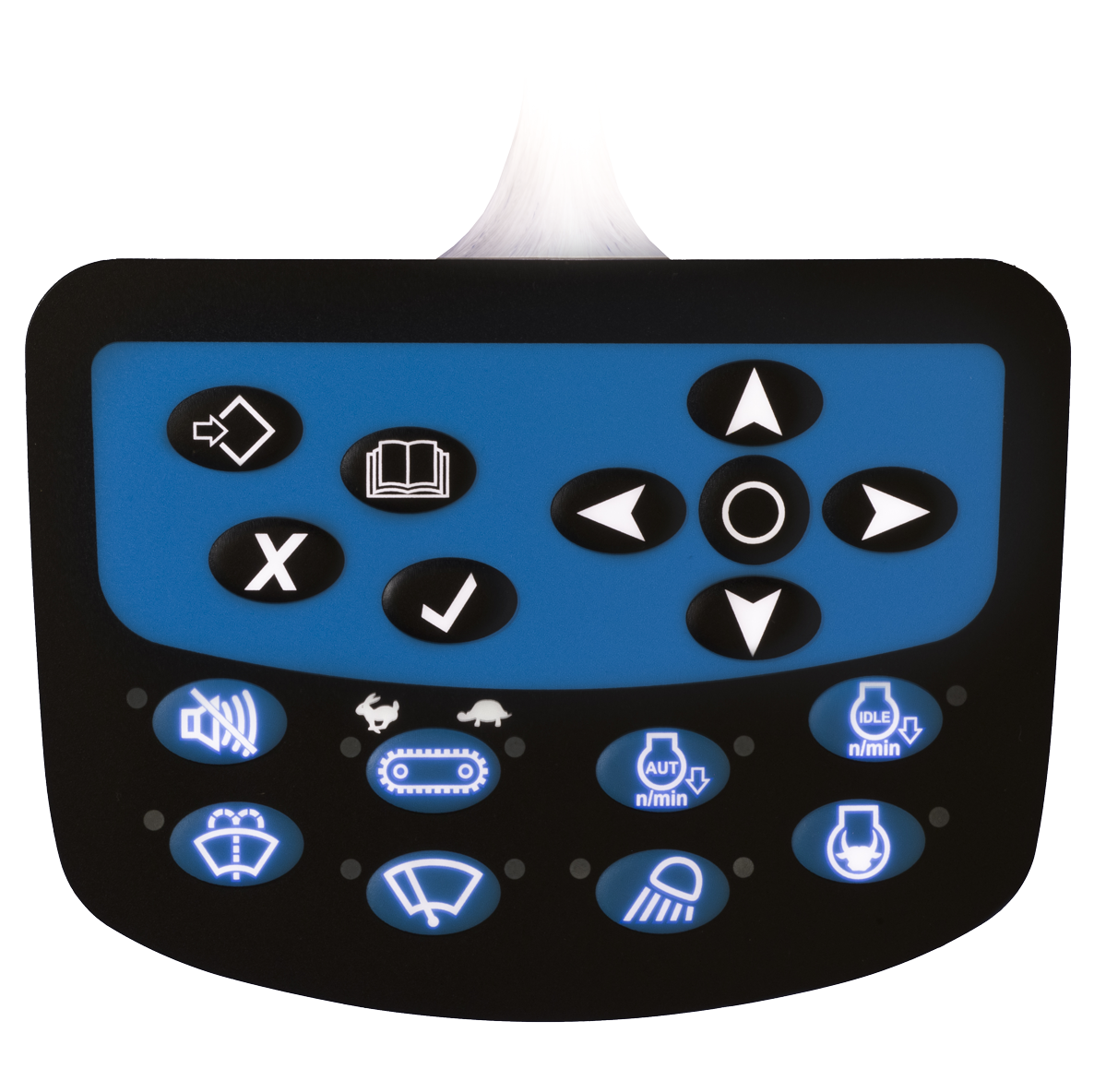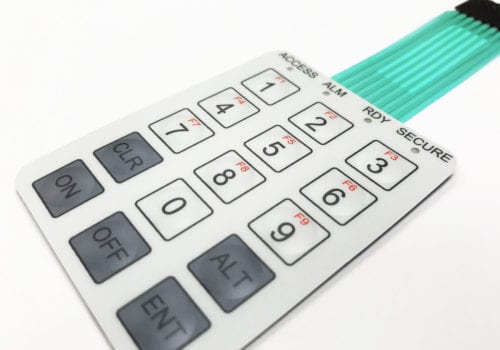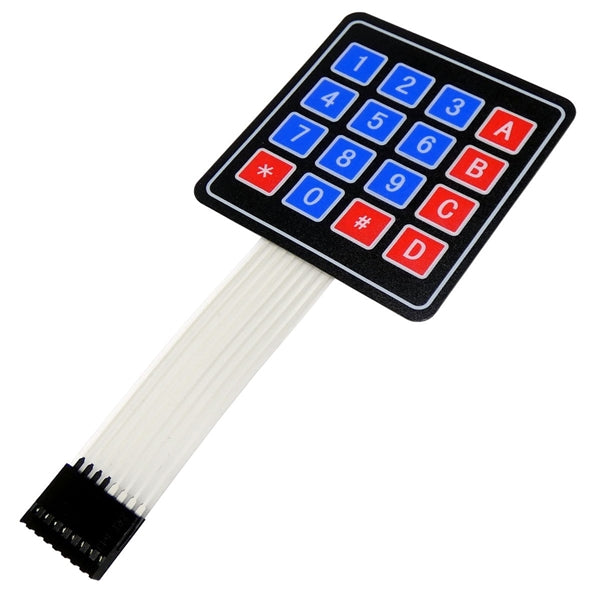Understanding the Manufacturing Process of Custom Membrane Switches
Understanding the Manufacturing Process of Custom Membrane Switches
Blog Article
Membrane Layer Switch Over Technology: The Trick to Dependable and Affordable User Interfaces
Membrane switch modern technology has actually emerged as a critical part in the design of customer interfaces, offering both reliability and cost-effectiveness across a diverse range of applications. As we explore the multifaceted benefits of membrane buttons, their potential for development raises questions regarding future applications and developing fads.
Understanding Membrane Change Technology
Membrane layer button technology is an extensively made use of interface option in different electronic gadgets, providing a seamless mix of capability and style. This technology integrates multiple layers of products, generally including a visuals overlay, spacer layer, and a circuit layer. The visuals overlay shows the user interface aspects, while the spacer layer divides the circuit layer from the overlay till a user activates a switch.
When stress is related to the overlay, the circuit layer completes the electrical circuit, sending out a signal to the tool. This mechanism enables for numerous setups, consisting of tactile responses and backlighting choices, boosting user interaction. Membrane switches are commonly manufactured utilizing long lasting products such as polyester or polycarbonate, ensuring durability and resistance to ecological elements like wetness and dust.
The adaptability of membrane switches enables their application in diverse markets, consisting of clinical tools, customer electronic devices, and commercial controls. Their small design permits assimilation into space-constrained atmospheres, offering an efficient interface without jeopardizing aesthetic allure. Recognizing the complexities of membrane layer switch technology is important for producers and designers seeking to create reliable and effective human-machine interfaces.
Trick Advantages of Membrane Layer Buttons
While different interface options exist, membrane switches offer distinctive benefits that make them a favored selection in numerous applications. Among the main benefits is their sturdiness; membrane buttons are designed to withstand harsh ecological conditions, including dampness, dust, and temperature level variations, making sure lasting efficiency. This strength considerably reduces the demand for constant substitutes, therefore reducing overall maintenance expenses.

Moreover, membrane buttons are light-weight and compact, making them ideal for applications where area is restricted. Their low-profile style adds to a smooth appearance without compromising functionality.
Cost-effectiveness is also a remarkable benefit, as the production procedure for membrane layer switches over tends to be less costly compared to traditional mechanical switches. This cost, incorporated with their integrity and ease of installation, positions membrane switches over as a practical solution for a wide variety of markets seeking effective and efficient user interfaces.
Applications Across Various Industries
How do membrane switches adjust to the diverse needs of different industries? Membrane layer switch technology is significantly acknowledged for its flexibility, making it suitable for a wide variety Continued of applications across several industries. In the clinical field, membrane switches are utilized in analysis equipment and patient tracking devices, where their resilience and ease of cleansing are important for preserving health criteria. The vehicle industry uses these buttons in dashboards and control board, supplying a structured aesthetic while ensuring straightforward procedure.
In consumer electronic devices, membrane buttons supply a portable service for remotes and home devices, improving user experience through user-friendly style. Furthermore, the commercial sector leverages membrane switches for equipment control board, gaining from their resistance to rough environments, such as wetness and dirt.
Military and aerospace applications likewise make use of membrane buttons for their reliability and capability to hold up against extreme problems, making sure functional performance in crucial circumstances. Moreover, the food and drink sector adopts these switches for automated systems, where cleanliness and convenience of operation are vital. Inevitably, membrane switches are customized to fulfill the distinct demands of each industry, confirming their vital duty in modern-day innovation user interfaces
Design and Personalization Alternatives

In the realm of membrane layer button innovation, layout and modification options play a crucial duty in enhancing functionality and customer communication. These buttons can be tailored to fulfill details functional demands and visual choices, making them versatile parts in different applications.
Among the primary personalization options is the design of the button itself, which can be designed to suit one-of-a-kind individual interfaces and ergonomic factors to consider. By adjusting the form, dimension, and setup of switches, producers can produce intuitive designs that facilitate simplicity of use. Furthermore, the unification of different colors and visuals overlays permits for branding and improved presence, guaranteeing that users can rapidly determine features.
In addition, membrane layer buttons can be crafted with various tactile comments devices, such as raised buttons or audible clicks, to improve the user experience. Different products can also be selected for toughness and environmental resistance, addressing aspects such as dampness, look at here temperature fluctuations, and chemical direct exposure.
Inevitably, the extensive style and modification options offered in membrane layer button innovation encourage businesses to create tailored services that not just fulfill useful needs however likewise straighten with their branding and operational needs.

Future Trends in Membrane Switches
As membrane layer switch innovation proceeds to evolve, future trends are progressively concentrated on boosting customer experience and incorporating advanced functionalities. One considerable fad is the assimilation of touch-sensitive and capacitive technologies into conventional membrane buttons. This growth permits more instinctive customer interfaces, giving responsive feedback while maintaining a sleek design.
Another emerging fad is the usage of eco-friendly products, driven by the expanding need for sustainable manufacturing practices. Makers are looking for to decrease their carbon footprint by making Going Here use of recyclable substrates and low-impact inks, aligning with worldwide sustainability goals.
Furthermore, the increase of the Internet of Things (IoT) is motivating the incorporation of smart attributes right into membrane layer switches. Enhanced connectivity alternatives will certainly allow devices to communicate with each other, permitting smooth combination right into broader systems.
In addition, improvements in printing innovations, such as digital printing, are permitting better style versatility and customization. This enables suppliers to create intricate designs and vibrant shades cost-effectively.

Verdict
To conclude, membrane switch modern technology stands for a vital innovation in customer interface style, providing significant benefits in toughness, personalization, and cost-effectiveness. Its widespread applicability throughout diverse sectors highlights its importance in contemporary innovation. As improvements continue to emerge, especially in touch-sensitive user interfaces and lasting products, the potential for membrane changes to boost individual experience and functionality stays appealing. Continued expedition of this technology will likely generate even more renovations and expand its extent in future applications.
Report this page